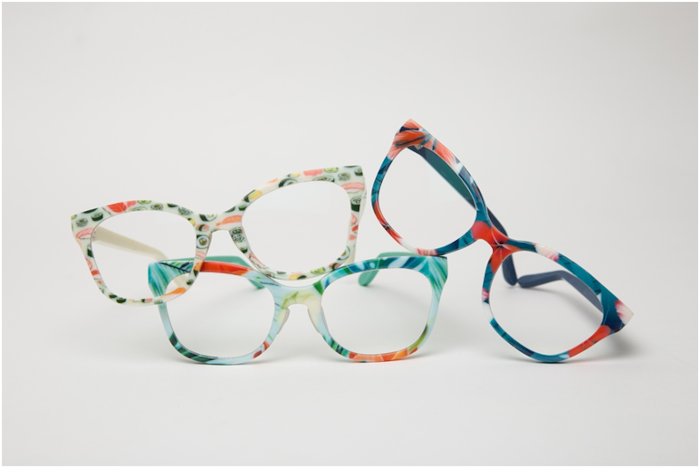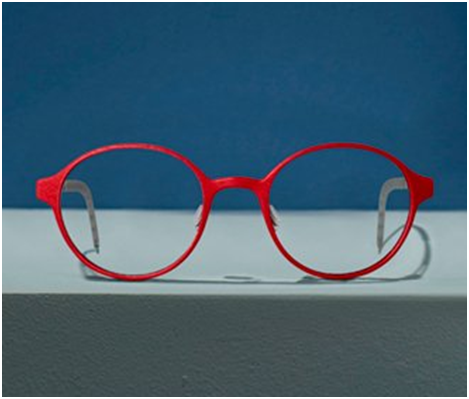
Charles R. Goulding and Preeti Sulibhavi examine the vision of online eyewear, helped along with 3D printing and an understanding of appropriate measurements.
During the COVID-19 pandemic, the already fast-growing trend of online eyewear has greatly accelerated, not promulgated. Historically, Luxottica has owned a majority of major eyewear retailers and distributors, everything from Sunglass Hut to LensCrafters. With this presence in market share, as many would agree, buying a pair of eyeglasses in-store was an expensive event.
Three Wharton business school graduates named Neil Blumenthal, Jeff Raider, and Andy Hunt were one of the first to make online eyewear a major product category by launching Warby Parker during their first year MBA program. More online eyewear retailers followed and now, particularly with the COVID-19 crisis, the trend has exploded.
Numerous 3D printing glasses manufacturers have entered into the eyewear business. With any undertaking though, there are challenges.
To make a custom-fit pair of glasses, manufacturers need some personalized calculations. One of these measurements is called pupillary distance or PD. Pupillary distance (PD) measures the distance between the centers of your pupils. This measurement is used to determine where you look through the lens of your glasses and should be as accurate as possible. Eye doctors use precise instruments to measure PD, which can then be sent to the manufacturers for production. Many eyeglass doctors also sell eyewear and historically have refrained from informing consumers of their PD calculations to ensure future revenue streams.
The average adult’s PD is between 54-74 mm; kids’ are usually between 43-58 mm. An eye doctor will usually measure PD during an eye exam as noted, but with online eyewear retail, the prescription must either already be provided to the consumer during an exam before the purchase – or the consumer must measure the PD themselves. Even if the eye doctor provides the consumer with their lens prescription, they often leave out the PD, which leaves the consumer to have to come up with the measurement themselves.
Fortunately, many online retailers, such as Zenni, have provided consumers with tips on how to measure PD themselves. They then don’t have to go back and press their optometrist for this relatively simple measurement. There are even how-to videos to help in measuring, step-by-step guides, and, Zenni provides a PD measurement ruler that can be downloaded on their website as well.

Research and Development Tax Credits are available for the eligible U.S.-based, 3D printing eyewear activities that companies engage in.
The Research and Development Tax Credit
Whether it’s used for creating and testing prototypes or for final production, 3D printing is a great indicator that R&D Credit eligible activities are taking place. Companies implementing this technology at any point should consider taking advantage of R&D Tax Credits.
Enacted in 1981, the now permanent Federal Research and Development (R&D) Tax Credit allows a credit that typically ranges from 4%-7% of eligible spending for new and improved products and processes. Qualified research must meet the following four criteria:
- Must be technological in nature
- Must be a component of the taxpayer’s business
- Must represent R&D in the experimental sense and generally includes all such costs related to the development or improvement of a product or process
- Must eliminate uncertainty through a process of experimentation that considers one or more alternatives
Eligible costs include US employee wages, cost of supplies consumed in the R&D process, cost of pre-production testing, US contract research expenses, and certain costs associated with developing a patent.
On December 18, 2015, President Obama signed the PATH Act, making the R&D Tax Credit permanent. Beginning in 2016, the R&D credit has been used to offset Alternative Minimum Tax (AMT) for companies with revenue below $50MM and, startup businesses can obtain up to $250,000 per year in payroll tax cash rebates.
Perfect Vision
While the pressure had been mounting against the brick-and-mortar eyewear retail industry, the COVID-19 crisis undoubtedly pushed consumers towards online eyewear retailers even more. The time has come for 3D printing to see this as a perfect opportunity to add customizable, flexible eyewear options to online consumers.
